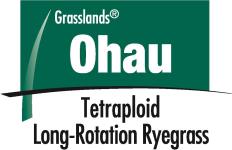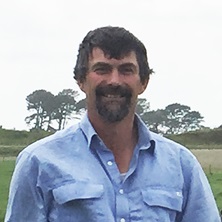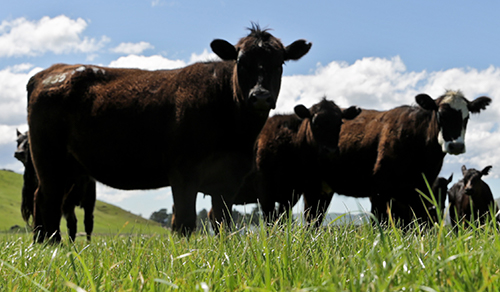Ohau
Explosive Early Spring Growth

- Sowing Rate 25 kg/HA
- Heading Date Late (+8)
- Ploidy Tetraploid
- Endophyte AR37, AR1, Low Endophyte
- Rust Tolerance Good
- Perenniality Long Rotation
- Grazing Seasons Spring
A persistent long rotation tetraploid for silage and short term pastures
- Available with AR37 and AR1 novel endophytes and LE
- Ideal for undersowing
- Very strong spring growth
- A persistent long rotation ryegrass
Bred for persistence in short term pastures
Ohau is a unique tetraploid long rotation ryegrass. Ohau has a late heading date and was bred for high production and quality.
Strong emphasis was placed on density and early spring growth.
AR37 endophyte is not suitable for deer or horse pastures.

Performance Data
Ohau has strong early spring activity which allows it to contribute valuable growth in the critical early lambing and calving period. Ohau is an extremely palatable grass, with a high feed value. Ohau's palatability results in pastures with a high green leaf content over summer.
Ohau is the ideal option for high quality, 2-4 year pasture in conditions suited to tetraploid ryegrass. The rapid establishment of Ohau also makes it ideal for undersowing into older pastures, with the AR37 endophyte offering increased protection against insect attack and increasing long term benefits.
Ohau AR37 is the ideal cultivar to use for undersowing into run out or thinning pastures due to its quick establishment, fast winter and spring growth, insect tolerance and persistence. It provides better persistence than Italian ryegrass (“short rotation” ryegrass), and greater establishment vigour and winter growth than perennial ryegrass. Sowing rates of Ohau AR37 need to be higher than with diploid Italian ryegrass due to the larger seed size. Ohau AR37 can also be used as a new pasture (sole ryegrass species) option.
Ohau AR37 has excellent early spring and summer growth to provide high quality feed when it is most required. Being a tetraploid, Ohau AR37 has excellent quality and can be used to fatten and finish lambs quickly. The increased insect persistence gives Ohau AR37 more chance of surviving in high insect pressure areas. Where insects are present at the time of sowing, seed treatment (or other insecticides) are recommended. Endophyte does not provide protection in the first six-eight weeks after sowing. If black beetle larvae are present, delay sowing until they begin pupating (usually late March), and use Superstrike or Ultrastrike (if grass grub is also present) seed treatment. Adults and larvae may still be found in spring and summer where insect pressure is high, due to adults feeding on plants in the pasture other than Ohau AR37, resulting in some eggs being laid and developing into larvae over summer.
Ohau AR37 is also suited for new pasture sowings (e.g. after crops or spraying), to provide a high performing pasture for cool-season and total production, and high animal growth rates.
Farmers can expect persistence to be similar to perennial tetraploids, but in some environments the AR37 may give better persistence than cultivars with other endophyte types. As with any tetraploid or hybrid ryegrass, it is more likely than diploid perennial ryegrass to thin out, following periods of severe drought, lack of fertiliser, or severe over-grazing, and is more prone to pugging damage. For these reasons, Ohau AR37 is best suited to irrigation or high rainfall climates, with good fertiliser use, free-draining soils, and controlled grazing
Suggested Mixes
Undersowing
| Rate (kg/ha) | |
|---|---|
| Ohau AR37 tetraploid long rotation ryegrass | 16-26 (depending on openness of pasture) |
Dairy Mix (new pasture)
| Rate (kg/ha) | |
|---|---|
| Ohau AR37 tetraploid long rotation ryegrass | 25 |
| Tribute white clover | 3 |
| Mainstay white clover | 2 |
| TOTAL | 30 |
Lamb Finishing Mix
| Rate (kg/ha) | |
|---|---|
| Ohau AR37 | 22 |
| Tribute white clover | 3 |
| Relish or Sensation red clover | 4 |
| Choice chicory | 1 |
| Ecotain environmental plantain or AgriTonic plantain | 2 |
| TOTAL | 32 |

Rotation Products

Read a case study
Agricom Case Studies
